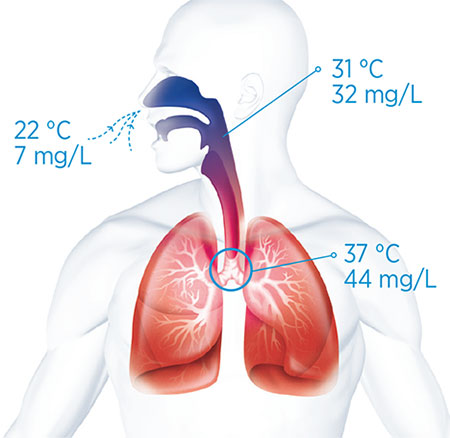The Normal Airway
The normal airway has two main lung functions: to maintain efficient gas exchange, and to preserve airway defense. To function optimally, natural balance must be maintained.
The respiratory system is a highly balanced mechanism reliant on humidity.
There are significant clinical benefits for patients when the level of temperature and humidity that occurs naturally in healthy adult lungs is emulated with artificial breathing systems.
To provide therapies that maintain optimal lung function, it is necessary to understand the physiological balance of humidity in the normal airway.
| Benefits |
|---|
| Assisting natural defense mechanisms in the airway |
| Promoting efficient gas exchange and ventilation |
| Increasing patient comfort and tolerance to treatment |
The normal airway has two main lung functions: to maintain efficient gas exchange, and to preserve airway defense. To function optimally, natural balance must be maintained.

Gas Exchange
Air-flow to the alveoli is necessary for gas exchange. The natural heating and humidifying functions of the airway assist with maintaining clear and patent airways by promoting mucociliary clearance and reducing bronchoconstriction associated with airway cooling.
Airway Defense
Primary mechanical defense mechanisms are sneezing, coughing, gagging and the use of natural filters, i.e. nasal hairs. The second line of defense is the mucociliary transport system which traps and neutralizes inhaled contaminants (in mucus) and transports them up and out of the airway, keeping the lung free from infection-causing pathogens. This critical defense system is very sensitive to humidity.
Humidity is also crucial to mucociliary health.
When a patient enters the hospital environment and requires respiratory support, the natural balance of the airway can become compromised.
Read more about the key factors that bring about complications.